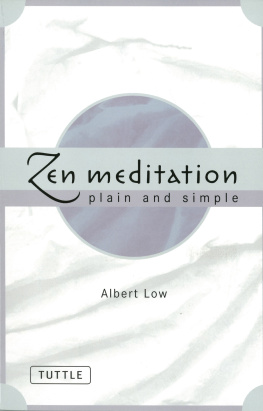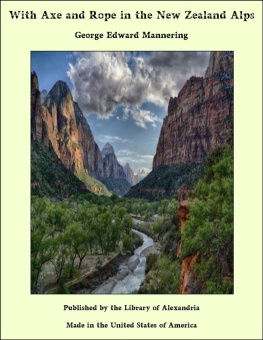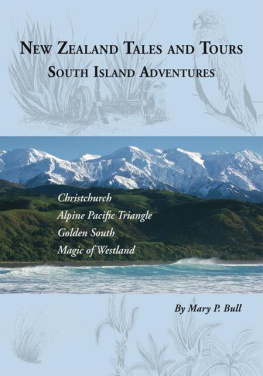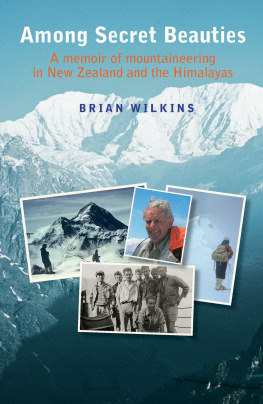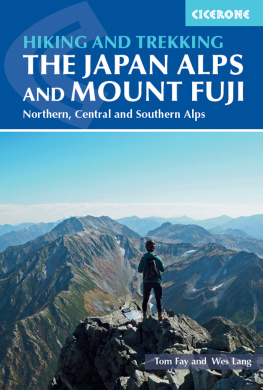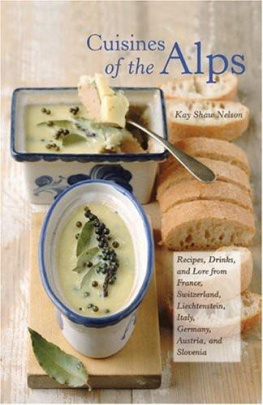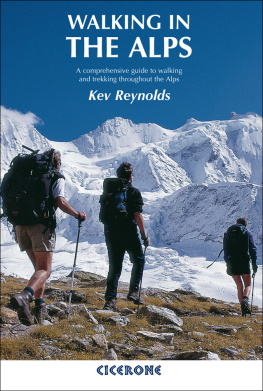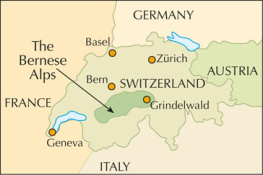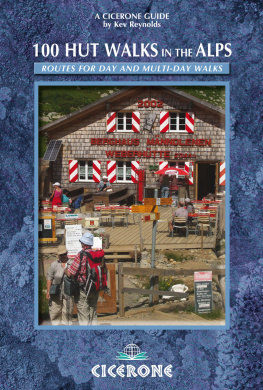Low - Uprising: Walking the Southern Alps of New Zealand
Here you can read online Low - Uprising: Walking the Southern Alps of New Zealand full text of the book (entire story) in english for free. Download pdf and epub, get meaning, cover and reviews about this ebook. year: 2021, publisher: The Text Publishing Company, genre: Detective and thriller. Description of the work, (preface) as well as reviews are available. Best literature library LitArk.com created for fans of good reading and offers a wide selection of genres:
Romance novel
Science fiction
Adventure
Detective
Science
History
Home and family
Prose
Art
Politics
Computer
Non-fiction
Religion
Business
Children
Humor
Choose a favorite category and find really read worthwhile books. Enjoy immersion in the world of imagination, feel the emotions of the characters or learn something new for yourself, make an fascinating discovery.
- Book:Uprising: Walking the Southern Alps of New Zealand
- Author:
- Publisher:The Text Publishing Company
- Genre:
- Year:2021
- Rating:3 / 5
- Favourites:Add to favourites
- Your mark:
- 60
- 1
- 2
- 3
- 4
- 5
Uprising: Walking the Southern Alps of New Zealand: summary, description and annotation
We offer to read an annotation, description, summary or preface (depends on what the author of the book "Uprising: Walking the Southern Alps of New Zealand" wrote himself). If you haven't found the necessary information about the book — write in the comments, we will try to find it.
Low: author's other books
Who wrote Uprising: Walking the Southern Alps of New Zealand? Find out the surname, the name of the author of the book and a list of all author's works by series.
Uprising: Walking the Southern Alps of New Zealand — read online for free the complete book (whole text) full work
Below is the text of the book, divided by pages. System saving the place of the last page read, allows you to conveniently read the book "Uprising: Walking the Southern Alps of New Zealand" online for free, without having to search again every time where you left off. Put a bookmark, and you can go to the page where you finished reading at any time.
Font size:
Interval:
Bookmark:


This book is about walking as a form of knowing. Armed with Ngi Tahus traditional oral maps and modern satellite atlas, I crossed the Southern Alps more than a dozen times, trying to understand how our forebears saw the land. What did it mean to define your identity by sacred mountains, or actually see them as ancestors, turned to stone?
Raised in the shadow of New Zealands Southern Alps, Nic Low grew up on mountain stories from his familys European side. Years later, a vision of the Alps in a bank of storm clouds sparked a decade-long obsession with comprehending how his Maori ancestors knew that same terrain.
K Tiritiri-o-te-moana, the Alps, form the backbone of the Ngi Tahu tribes territory: five hundred kilometres of mountains and glaciers, rivers and forests. Far from being virgin wilderness, the area was named and owned long before Europeans arrived and the struggle for control of the land began.
Low talked with tribal leaders, dived into the archives and an astonishing family memoir, and took what he learned for a walk. Part gripping adventure story, part meditation on history and place, Uprising recounts his alpine expeditions to unlock the stories living in the land.
Uprising is an invitation to travel one of the worlds most spectacular landscapes in the company of Mori explorers, raiding parties, and gods.

The manuscript of this book was the recipient of the 2018 Writers Award from Copyright Licensing New Zealand

The author and publisher acknowledge the support of the Federated Mountain Clubs Mountain and Forest Trust in the production of this book
For Ahi
Uprising
Throughout this book, I refer to my iwi (tribe), Ngi Tahu, as we or us. I dont speak for the tribe; this is just the Mori way of doing things. At times I also refer to my Pkeh (European New Zealander) ancestors as we or us. Im not Pkeh, but Pkeh society formed me tooits common for anyone whos Mori to hold overlapping identities, and walk in both worlds.
That said, its also the Mori way to claim that your ancestors were the best-looking and most intelligent, and liked to jump over mountains or travel on the backs of whales. Our histories are multiple and parochial. There are sources listed in the endnotes, but theres no hard line between history and myth. And if this book seems biased towards Ngi Tahu, thats because it isbut only because were so good-looking and smart, and our ancestors
Ive used Mori place names wherever possible, with a preference for spellings recorded in K Huru Manu, the Ngi Tahu atlas. More than geographical markers, these names carry our history and mana whenua (authority over the land), and our identity: when we stand to speak, our most basic form of introduction is to name our ancestral mountains, rivers, lakes and coasts. Mori names are initially followed by the English ones in brackets.
Ive also used Mori for key concepts not easily explained in English, or where a Mori word is in common usage in New Zealand English, initially with a summary translation. Youll find a glossary of sorts at the back.
Aside from the tribes official name, Ngi Tahu, Ive also preferred our southern Ki Tahu dialect, which replaces the Ng with K. A macron over a vowel makes the sound longer. Heres a pronunciation guide:
Vowels
A as in car
E as in egg
I as in see
O as in or
U as in loo
Select consonants
Ng as in sing
Wh as in far out
R like the Spanish r, lightly rolled so as to be close to a d
Examples (start slow, then speed up)
Ngi Tahu: Nigh Taa-hoo
Whakapapa: far-car-pa-pa
Karakia: ca-rah-key-ah
Tapu: tup-poo
Te-Mawheranui-o-k-kh-o-T-te-raki-whnoa: just kidding.
How then are we Ngi Tahu going to walk through this ancient landscape in the new centurythis landscape scarred by memory? How will the coming generations of our tribe see this land and this coast? Will they sing to it? Will they sing the old songs or will they sing their own?
T Tipene ORegan, 1999
There were mountains outside my window: a range of peaks lifting cold and fierce into the blue. Looking up from my desk, I felt the rush of joy that mountain lovers feel in the presence of the real thing. I felt at home. There was Aoraki, the highest in Aotearoa New Zealand, cloaked in snow. There were his brothers, with their stone faces tattooed by glacial ice. But I was in Australia, where the hills are stumps like old mens teeth. I looked again. The peaks grew before my eyes, boiling up into the sky, and I had to laugh. For a moment, Id erased the dusty plains of south-eastern Australia and turned a bank of storm clouds into K Tiritiri-o-te-moana, New Zealands Southern Alps.
From the outset, K Tiritiri-o-te-moana have been seen as a mirage. When the explorer Mui first sighted a distant white gleam on the horizon, he thought they were clouds. As his waka (canoe), Mahaanui, approached, the clouds resolved into icy summits. He named them K Tiritiri-o-te-moana after his mistake. Id make his mistake in reverse.
Through the open window the peaks disintegrated, and I felt the first gust of an approaching storm wind. Id spent a decade away from home, and that wind was home calling. They say it happens to everyone whos Mori, sooner or later.
I was born on a narrow, mountainous island to a Ngi Tahu mother and a Pkeh father. The jagged line of the Southern Alps marked the horizon of my childhood in Christchurch, on the east-coast plains of the South Island. We often spent school holidays in the mountains. I was nine when Dad took my two brothers and me on our first overnight tramp, in the Arthurs Pass National Park.
When we reached the Anti Crow Hut, looking across the Waimakariri River valley to the gleaming glacier spilling from the southern flank of Kaimatau (Mt Rolleston), we heard for the first time how our great-uncles Geoff Harrow and Deryck Morse had arrived at that same hut late one night to find it packed with young trampers. Every bunk was occupied. No one offered to make room.
The two men, both in their seventies, sat down to prepare dinner. While they waited for their billy to boil, they fell to reminiscing.
You remember carrying the cement up here, Horse? Geoff said, maybe a little louder than necessary.
I do. It was damned heavy. Worth it, though. Look how well the place has held up.
The others in the room fell quiet. Deryck hid his smile. Without a word, two of the youngsters moved their stuff onto the floor.
On my Pkeh side our family is full of mountain people. Our European heritage is primarily English, Irish and Scottish, but its in the Southern Alps we feel most at home. In 1902 a party of twenty Lows travelled in horse-drawn wagons from their South Canterbury farms to visit Aoraki (Mt Cook), an eighteen-day round trip. Family legend says at that time they were the biggest party ever to visit, and people mistook them for a travelling circus. A generation on, my great-uncles were both presidents of the Canterbury Mountaineering Club in their day. Geoff made the first ascent of the Nepalese giant Baruntse on an expedition led by Sir Edmund Hillary, and once led a club trip that put eighteen people on Aorakis summit in one day. Their generation handed down respect for the mountains to my dad and his generation, who in turn gifted it to ours.
Font size:
Interval:
Bookmark:
Similar books «Uprising: Walking the Southern Alps of New Zealand»
Look at similar books to Uprising: Walking the Southern Alps of New Zealand. We have selected literature similar in name and meaning in the hope of providing readers with more options to find new, interesting, not yet read works.
Discussion, reviews of the book Uprising: Walking the Southern Alps of New Zealand and just readers' own opinions. Leave your comments, write what you think about the work, its meaning or the main characters. Specify what exactly you liked and what you didn't like, and why you think so.




